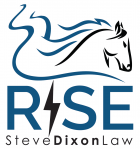Sometimes clients call Steve Dixon Law, one of the best car accident lawyer’s in Las Vegas, and ask even though they may share in the fault of the accident, could they still recover for their injuries. The answer, in short is yes. Nevada’s “comparative negligence” law allows a plaintiff in a personal injury case to recover a percentage of the plaintiff’s damages as long as one or more defendants were at least 50% responsible for the injury or accident.
Nevada’s “comparative negligence” standard is sometimes called “comparative fault,” “shared fault,” “modified comparative negligence” or “modified comparative fault.”
Does Nevada follow the “contributory negligence” rule?
Not any longer. In the past, many states — including Nevada — followed a “contributory negligence” standard. Under the doctrine of contributory negligence, if you were even slightly at fault for an accident, you would not be entitled to any recovery whatsoever.
This approach came to be viewed as outdated and unfair to many accident victims. As a result, most states (including Nevada) now apportion blame under a system known as “comparative negligence.”
Under Nevada’s comparative negligence law, if you are partly to blame for an accident, the total compensation you would otherwise be entitled to is reduced by the percentage of the injury for which you are responsible.
Example: Bill is driving 45 mph in a 35 mph residential zone. The light is green in his direction. As he crosses the intersection, Ted runs the red light at 35 mph and hits Bill, leaving Bill with a serious injury.
A jury determines that Bill’s injuries are worth $1,000,000 in damages. However, the jurors also determining that because Bill was speeding, he is 20% to blame for the accident. As a result, Bill’s award is reduced by 20% and he recovers $800,000 (80% of $1,000,000).
Does Nevada follow the “comparative negligence” rule?
Yes, but with a twist. Under a pure comparative negligence / shared fault standard, blame can be apportioned in any combination, as long as the total adds up to 100%.
For instance, let’s say that in the above example, it was Bill that had run the red light and Joe that had been speeding. Under a “pure” comparative negligence approach, Bill would be 80% responsible for the accident. His $1 million in damages would be reduced by 80%. But Ted would still have to pay him $200,000 even though Bill was largely responsible for the accident.
While this may seem fair, in some cases this could lead to grossly unfair results. For instance, Ted — who was only 20% at fault — would still have to pay the full costs of defending the lawsuit. He would bear all of his attorney’s fees and costs.
To remedy this, Nevada adopted a “modified comparative negligence” standard in 1973. Under Nevada’s modified comparative fault rule, you can only recover for a personal injury if you are less than 50% at fault.
Nevada’s “modified comparative negligence” rule
Nevada’s comparative negligence law, is set forth in opens in a new windowSection 41.141 of the Nevada Revised Statutes (NRS). It is a “modified” comparative fault statute in that it allows proportional recovery only when you are less than 50% responsible for an accident or injury.
Specifically, NRS 41.141 provides:
In any action to recover damages for death or injury to persons or for injury to property in which comparative negligence is asserted as a defense, the comparative negligence of the plaintiff or plaintiff’s decedent does not bar a recovery if that negligence was not greater than the negligence or gross negligence of the parties to the action against whom recovery is sought.
In other words, if the jury determines that the defendant or defendants together are slightly more than 50% responsible, then the plaintiff will recover something. But the plaintiff is even 50% or more at fault, he or she is entitled to nothing, no matter how serious the injury.
How does a jury apportion blame in a Nevada personal injury lawsuit?
After you hire a Las Vegas Personal Injury Lawyer, and the case goes to trial, if the jury determines that the plaintiff is entitled to recover, the jury will return two verdicts:
- A regular verdict indicating the plaintiff’s total damages (without taking into account the plaintiff’s fault); and
- A special verdict indicating the percentage of negligence attributable to each party.
As long as the plaintiff’s shared fault is less than 50%, the judge will then reduce the plaintiff’s damage award by the percentage of the accident attributable to the plaintiff.
- Example: Carrie and Delilah are involved in a car accident that causes $100,000 in damages to Carrie. Carrie sues Delilah. The jury decides that Carrie’s negligence contributed to the accident and that she is 25% at fault while Delia is 75% at fault. Under Nevada’s comparative negligence standard, Carrie will receive a judgment of $75,000 (75% of the total amount) from Delilah.
- However, let’s say that instead, the jury finds that it was Carrie who was 75% responsible for the accident. Under Nevada’s modified comparative negligence law, Carrie recovers nothing because she is more than 50% at fault.
This is, of course, a simplified example of how the modified comparative fault standard operates. There are variables and complexities in each case that may affect the victim’s ability to recover for injuries suffered in an accident.
Our Nevada personal injury lawyers can go over the facts of your case and help you determine whether it makes sense to proceed with a claim for your losses.
Partially at fault for your accident? Call us for help…
Even though an accident may seem to be a straightforward case, comparative fault in Nevada is not always easy to determine.
Before you write off your chances, why not contact the car accident attorneys at Steve Dixon Law for a no-obligation consultation?
To schedule your free consultation, call our best Las Vegas personal injury attorneys at (702) 329-4911.

